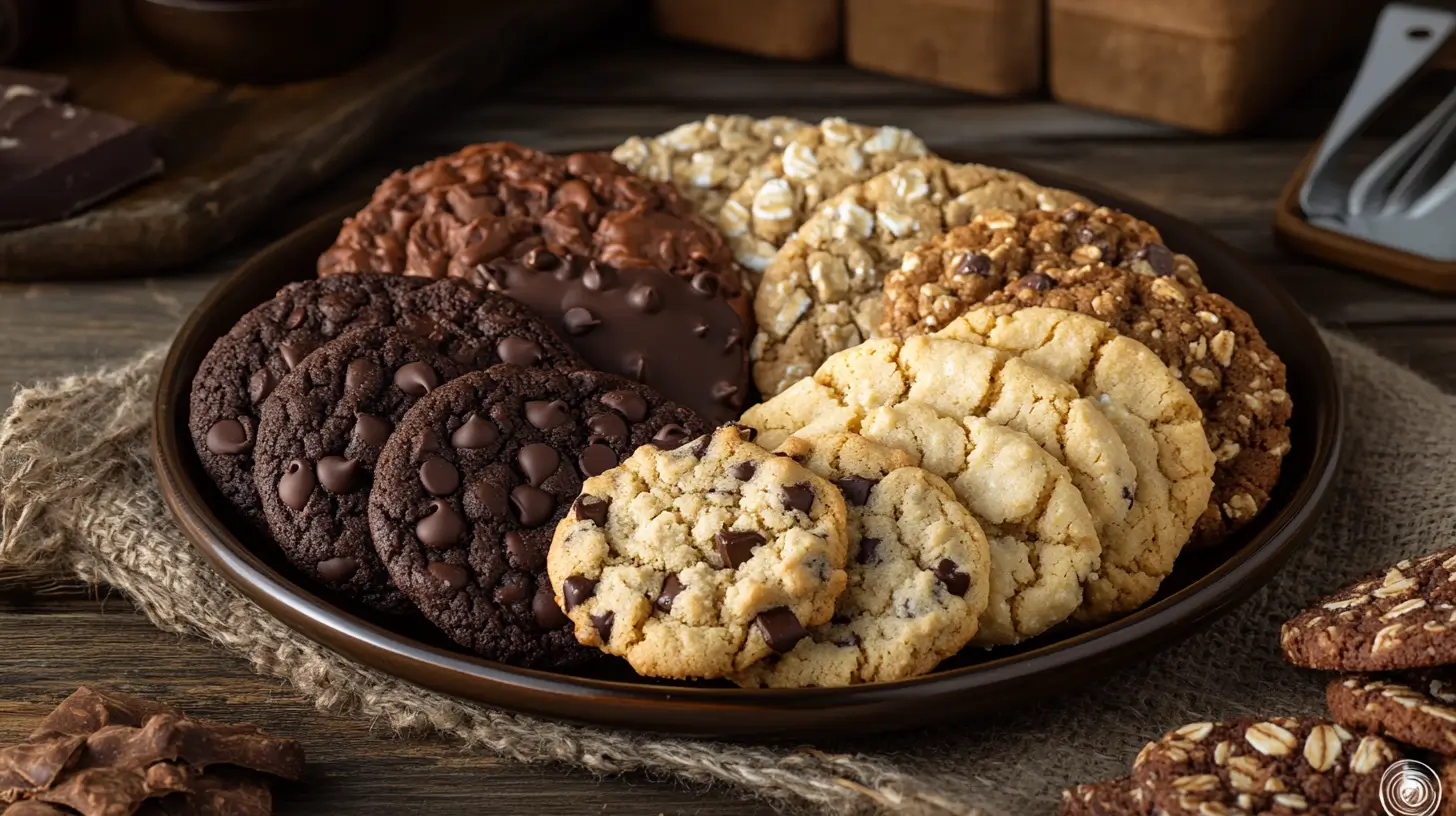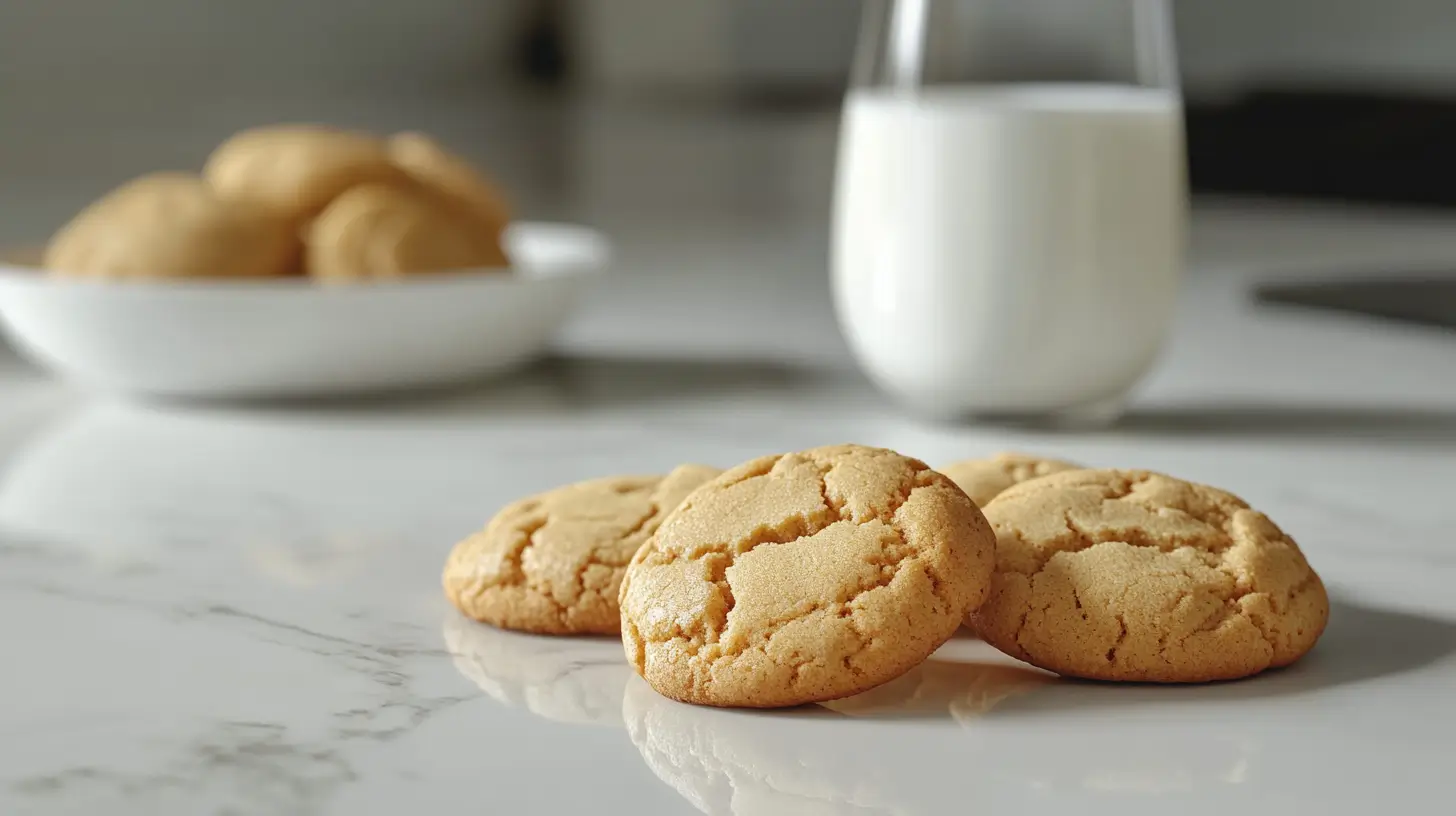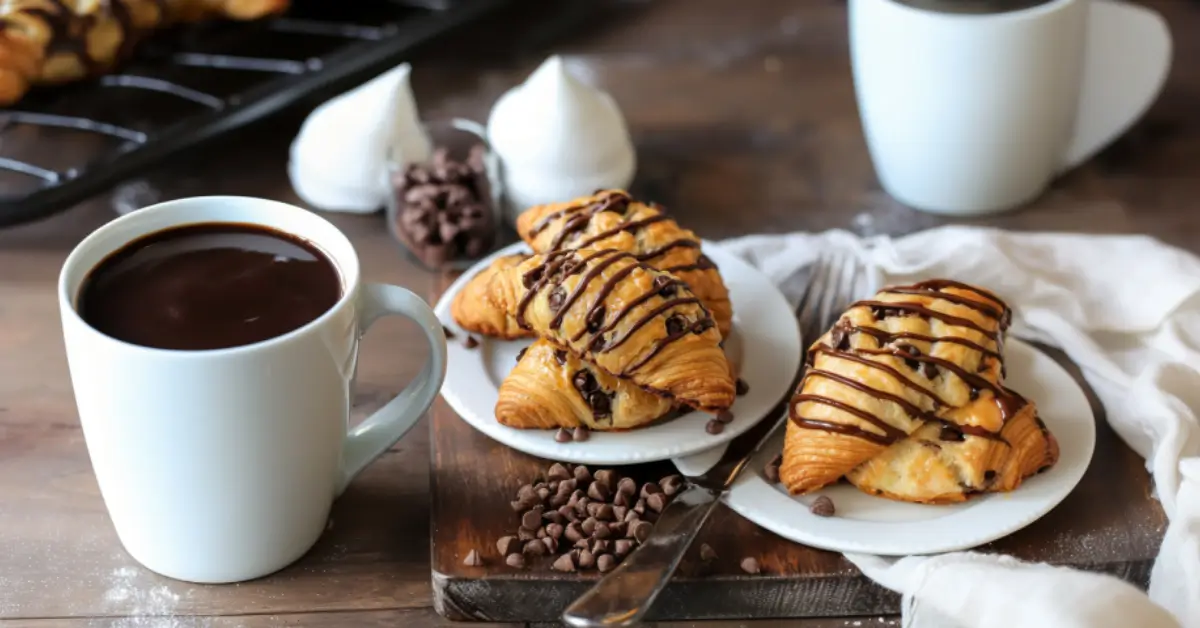Introduction
Achieving the perfect crackled top on cookies is a coveted goal for bakers worldwide. These distinctive fissures not only add visual appeal but also hint at the cookie’s delightful texture, combining crisp edges with a tender interior. What makes cookies crackle on top is a question that blends art, science, and a sprinkle of culinary tradition.
Cookies with crackled tops often evoke nostalgia, as they are staples in holiday baking and family traditions. Beyond aesthetics, crackles signify specific chemical reactions that occur during baking. Understanding these reactions allows bakers to control the process and craft cookies that are as beautiful as they are delicious.
In this guide, we’ll thoroughly unravel the secrets behind what makes cookies crackle on top, exploring everything from the science of sugar crystallization to the crucial role of chilling dough. By the time you finish reading, you’ll have all the knowledge necessary to confidently achieve this delightful baking marvel.
The Science of Cookie Crackles
How Sugar Crystallization Creates Cracks on Cookies
At the heart of what makes cookies crackle on top lies the role of sugar crystallization. When sugar is exposed to high heat, it melts and later solidifies, creating a thin, crispy crust on the surface. As the cookie expands during baking, this crust begins to fracture, forming the signature cracks.
Key factors influencing sugar crystallization include:
- Granulated sugar vs. powdered sugar: Granulated sugar forms coarser crystals that enhance crackling, while powdered sugar provides a smoother surface but less dramatic cracks.
- Moisture levels: Sugar absorbs moisture from the dough, affecting how it melts and recrystallizes during baking.
Transitioning from raw dough to a crackled masterpiece involves a delicate balance of sugar and heat, emphasizing the importance of ingredient proportions.
How Steam and Heat Influence Crackles
Steam and heat play a pivotal role in determining what makes cookies crackle on top. As the cookie dough heats up, steam gradually forms and begins forcing its way to the surface. Consequently, this pressure causes the outer crust to crack, effectively revealing the layers hidden beneath.
- Rapid heat exposure: Baking at higher temperatures encourages faster crust formation, leading to more pronounced cracks.
- Even heat distribution: Uniform oven temperatures ensure consistent crackling across all cookies.
Without the interplay of steam and heat, cookies might bake smoothly without the characteristic fissures bakers aim for.
Key Ingredients That Affect Crackling
Types of Sugar and Their Role in Cracking Cookie Tops
Sugar isn’t just a sweetener; it’s a structural element that dictates what makes cookies crackle on top. Different sugars yield different results:
- Granulated sugar: Promotes sharper cracks due to its ability to recrystallize.
- Brown sugar: Adds moisture, creating softer cracks with a chewier texture.
- Powdered sugar: Often used as a dusting, it contributes to the cookie’s aesthetic but plays a smaller role in crackling.
Choosing the right type of sugar is essential, as it ensures the cracks form as intended while also enhancing the cookie’s flavor and texture.
Leavening Agents Like Baking Soda and Baking Powder
Leavening agents are responsible for the rise and expansion of cookies, crucial for what makes cookies crackle on top. Baking soda and baking powder both release carbon dioxide during baking, creating internal pressure that contributes to crackling.
- Baking soda: Reacts with acidic ingredients, providing a strong lift.
- Baking powder: Offers a more gradual rise, perfect for subtle cracks.
The amount and type of leavening agent used can drastically alter the appearance and texture of the final cookie.
The Role of Fats and Moisture
Fats, such as butter or oil, affect what makes cookies crackle on top by determining the dough’s spread and texture. Moisture levels also play a significant role:
- Butter: Produces a rich flavor and promotes spreading, aiding crack formation.
- Shortening: Creates a more stable dough with less dramatic cracks.
- Moisture content: Higher moisture increases steam production, enhancing crackling.
Balancing fats and moisture ensures cookies develop the desired surface texture while maintaining a soft, tender interior.
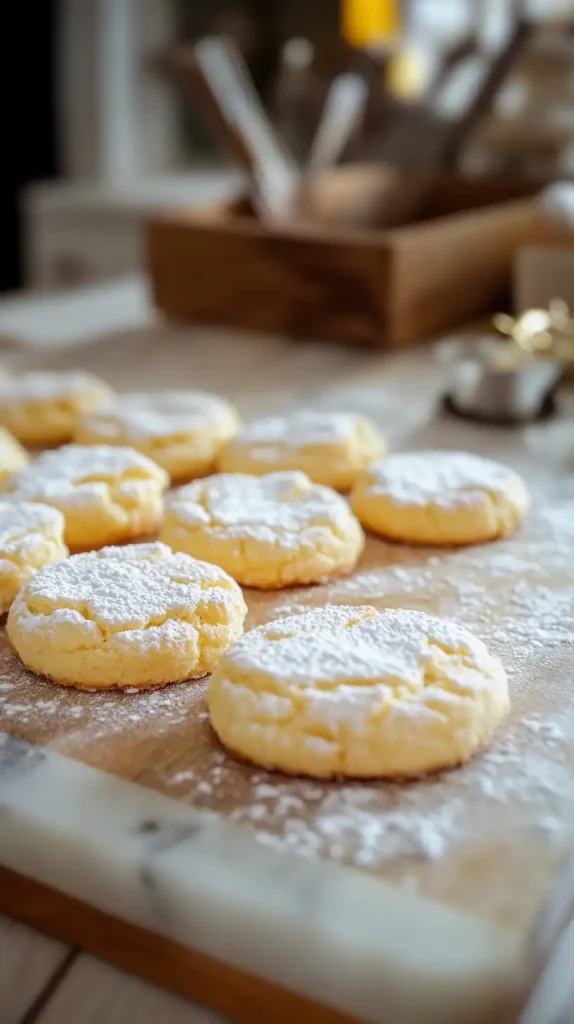
Baking Techniques for Crackled Cookies
Why Preheating the Oven Is Essential for Crackle-Topped Cookies
Preheating the oven is an essential step in achieving what makes cookies crackle on top. When the oven is properly preheated, the dough is exposed to a consistent temperature from the very beginning, which promotes even crust formation and helps create the signature cracks.
- Set the correct temperature: Follow the recipe to avoid under- or overheating.
- Use an oven thermometer: This helps confirm that the internal temperature matches the setting.
Skipping preheating can lead to uneven baking, diminishing the chances of achieving uniform cracks.
Optimal Baking Time and Temperature
Baking time and temperature directly influence what makes cookies crackle on top. Higher temperatures encourage faster crust formation, while longer baking times can dry out the dough.
- Short baking at high heat: Produces crisp, dramatic cracks.
- Lower heat with extended time: Creates softer cookies with subtle crackling.
Experimenting with different settings can help you fine-tune the baking process for the perfect results.
Importance of Uniform Dough Size
Uniform dough size ensures even baking, a key factor in what makes cookies crackle on top. If cookies differ in size, larger ones may spread too much, while smaller ones might overbake.
- Use a cookie scoop: This tool helps create consistently sized portions.
- Weigh your dough: For precision, measure each ball of dough before baking.
Consistency in size translates to consistency in texture and appearance, ensuring every cookie showcases its signature cracks.
The Role of Chilling the Dough
How Chilling Dough Affects Texture and Crackled Cookie Tops
Chilling the dough is essential for controlling what makes cookies crackle on top. Cold dough spreads less during baking, leading to a thicker cookie with more pronounced cracks.
- Firming fats: Chilling solidifies fats, preventing excessive spreading.
- Enhancing flavors: Resting the dough allows flavors to meld, improving taste.
Skipping this step can result in flat cookies with minimal crackling, diminishing their visual appeal.
Time Recommendations for Chilling
The duration of chilling depends on the recipe, but here are some general guidelines:
- 30 minutes to 1 hour: For basic recipes requiring slight firming.
- 24 hours: For deeply flavored doughs that benefit from extended resting.
Adhering to these timelines ensures the dough is primed for baking, maximizing the potential for beautifully crackled tops.
How to Achieve Perfect Crackles
Using Specific Recipes Designed for Crackled Cookies
Specialized recipes often include ingredients and techniques tailored for what makes cookies crackle on top. Look for recipes that:
- Emphasize sugar content and type.
- Include precise baking instructions.
- Suggest chilling times.
Adjusting Ingredients to Perfect What Makes Cookies Crackle on Top
Customization is key to mastering what makes cookies crackle on top. Consider these adjustments:
- Increase sugar: To enhance crystallization.
- Reduce moisture: For crisper cracks.
- Alter leavening agents: To control rise and expansion.
Experimenting with these variables helps you craft cookies that align with your preferences.
Troubleshooting Crackles in Cookies
Common Problems and Their Solutions
Despite best efforts, issues can arise. Here’s how to address common problems:
- No cracks: Increase oven temperature or adjust sugar type.
- Overly smooth surface: Chill dough longer before baking.
Overbaking and Underbaking Issues
- Overbaking: Leads to overly hard cookies; reduce baking time.
- Underbaking: Results in a soft texture with incomplete cracks; bake slightly longer.
Understanding these pitfalls ensures consistent results, enhancing what makes cookies crackle on top.
Cultural and Regional Variations
Popular Crackled Cookie Recipes Worldwide
The phenomenon of what makes cookies crackle on top transcends borders. Some beloved recipes include:
- Mexican chocolate cookies: Featuring a spicy twist.
- Italian amaretti: With almond flour and powdered sugar.
- Middle Eastern ma’amoul: Infused with dates and spices.
Traditional Holiday Crackled Cookies
Crackled cookies often shine during festive seasons, with recipes like:
- Molasses crinkles: A holiday classic in the U.S.
- German lebkuchen: Spiced cookies with a crackled glaze.
These regional specialties highlight the universal appeal of crackled cookies, celebrating their role in global culinary traditions.
Tools and Equipment for Perfect Cookies
Best Baking Trays and Parchment Paper
The right tools are fundamental to mastering what makes cookies crackle on top. Baking trays and parchment paper ensure even heat distribution and prevent sticking, both critical for achieving the perfect cracks.
- Aluminum trays: Known for excellent heat conduction, they help cookies bake evenly, enhancing crackling.
- Non-stick trays: Convenient but may require additional monitoring to avoid overbaking.
- Parchment paper: Reduces sticking and encourages uniform cracks by allowing cookies to spread smoothly.
Using high-quality tools not only streamlines the baking process but also elevates the final presentation, making each crack stand out.
Thermometers for Accurate Baking
Temperature precision is vital for understanding what makes cookies crackle on top. A reliable thermometer ensures your oven maintains consistent heat, eliminating guesswork.
- Oven thermometers: Detect temperature fluctuations that could impact cookie consistency.
- Infrared thermometers: Quickly measure surface temperature for added accuracy.
These tools empower bakers to control the environment, ensuring each cookie develops its characteristic cracks without under- or overbaking.
Top Recipes for Crackled Cookies
Chocolate Crackle Cookies
Rich and indulgent, chocolate crackle cookies epitomize what makes cookies crackle on top. Their dark, fudgy centers contrast beautifully with the crackled, powdered-sugar-dusted surface.
- Key ingredients: Cocoa powder, granulated sugar, and a generous dusting of powdered sugar.
- Pro tip: Chilling the dough for at least an hour enhances the crackled effect.
Lemon Crinkle Cookies
Bright and zesty, lemon crinkle cookies are a refreshing take on the crackled classic. Their vibrant citrus flavor pairs perfectly with the delicate cracks on top.
- Key ingredients: Lemon zest, lemon juice, and a light coating of powdered sugar.
- Pro tip: Use fresh lemon juice for a more pronounced flavor.
Spiced Molasses Cookies
Molasses cookies, spiced with cinnamon and ginger, embody what makes cookies crackle on top with their soft texture and fragrant aroma. These cookies are a holiday favorite, showcasing warm spices and bold cracks.
- Key ingredients: Molasses, brown sugar, and warming spices like nutmeg and cloves.
- Pro tip: Roll the dough in granulated sugar before baking to enhance the crackled effect.
The Role of Presentation
Making Crackles More Pronounced
Presentation plays a key role in showcasing what makes cookies crackle on top. Techniques to make cracks stand out include:
- Using powdered sugar: Heavily coating the dough before baking highlights the fissures.
- Lightly pressing the dough: Flattening slightly before baking encourages more prominent cracks.
A visually appealing cookie is not just about taste—it’s also about celebrating its unique textures and patterns.
Using Powdered Sugar or Toppings
Powdered sugar enhances the aesthetic appeal of crackled cookies, creating a striking contrast against darker doughs. Additional toppings can also elevate their appearance:
- Colored sugars: Add a festive touch for holidays.
- Edible glitter: Offers a subtle sparkle for special occasions.
Experimenting with toppings transforms simple cookies into artistic creations, emphasizing the beauty of their crackles.
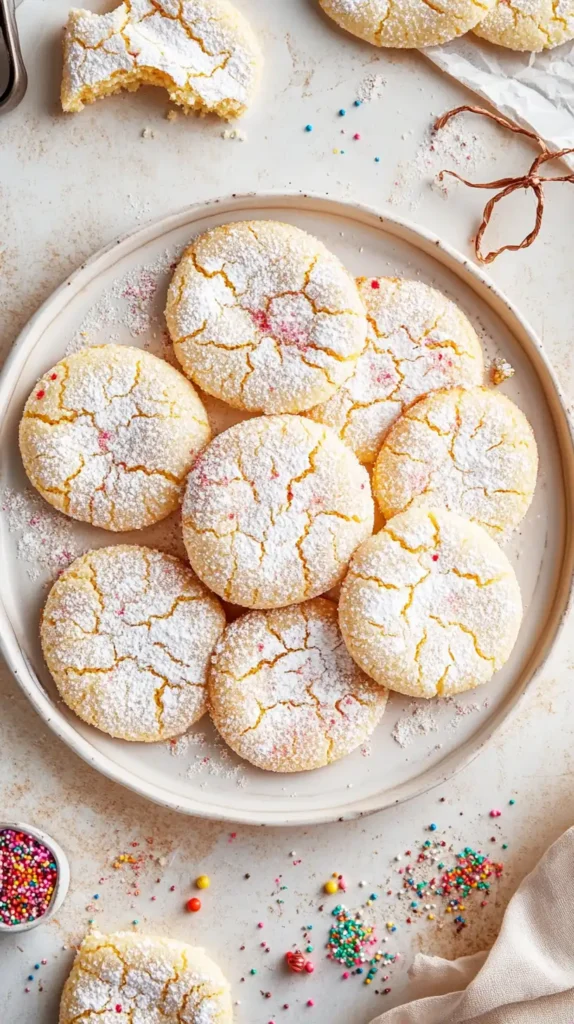
Healthier Alternatives for Crackled Cookies
Substituting Refined Sugar
For a healthier approach to what makes cookies crackle on top, consider alternative sweeteners. Substitutions can maintain flavor while reducing sugar content:
- Coconut sugar: Provides a caramel-like taste and lower glycemic index.
- Maple syrup or honey: Adds natural sweetness, though adjustments to dry ingredients may be necessary.
Using these alternatives ensures your cookies retain their crackled charm while aligning with health-conscious preferences.
Gluten-Free and Vegan Options
Creating crackled cookies that cater to dietary restrictions involves innovative ingredient swaps:
- Gluten-free flours: Almond or oat flour can replicate the texture needed for cracks.
- Vegan substitutes: Use flaxseed or chia seed as egg replacements, and opt for plant-based fats.
These adjustments make what makes cookies crackle on top accessible to everyone without sacrificing quality.
Why Texture Matters in Cookies
The Interplay of Crunch and Chewiness
The allure of what makes cookies crackle on top lies in the textural contrast they provide. Crackles signal a crisp exterior, while the interior often remains soft and chewy.
- Crunch: Adds a satisfying bite and visual appeal.
- Chewiness: Balances the cookie, making it enjoyable for diverse palates.
Mastering this interplay ensures cookies that not only look amazing but also deliver a delightful eating experience.
Consumer Preferences and Trends
Consumer trends reveal a growing demand for cookies that emphasize texture. Crackled tops, with their distinct appearance, cater to this preference:
- Visual appeal: Crackles make cookies Instagram-worthy.
- Unique textures: The contrast between crisp and chewy is universally appealing.
Understanding these trends allows bakers to create cookies that resonate with modern tastes while celebrating the tradition of what makes cookies crackle on top.
Pairing Crackled Cookies with Drinks
Best Beverages to Enhance Flavor
Pairing beverages with cookies elevates the overall experience, complementing what makes cookies crackle on top. Ideal pairings include:
- Coffee: Enhances the richness of chocolate crackle cookies.
- Herbal teas: Complements the citrus notes in lemon crinkle cookies.
Choosing the right drink ensures every bite is paired with a sip that highlights its flavor.
Seasonal Drink Pairings
Seasonal beverages add an extra layer of enjoyment to crackled cookies:
- Winter: Hot cocoa with spiced molasses cookies.
- Summer: Iced lemonade paired with lemon crinkle cookies.
These combinations create a harmonious sensory experience, showcasing the versatility of crackled cookies across seasons.
FAQs About Crackled Cookies
How to Stop Cookies from Cracking on Top?
If you prefer smooth-topped cookies without cracks, here are some strategies to minimize cracking:
- Reduce oven temperature: Baking at a lower temperature slows crust formation, preventing cracks from forming.
- Avoid over-leavening: Too much baking soda or powder causes excessive expansion, leading to cracking.
- Skip chilling the dough: Warm dough spreads more evenly, reducing the chance of fissures.
- Increase moisture: Adding a small amount of liquid (milk or water) softens the dough, limiting crust development.
By adjusting these factors, you can achieve smooth, even surfaces on your cookies.
How to Get a Crinkle Top on Cookies?
Achieving the classic crinkle top requires the right balance of ingredients and techniques:
- Chill the dough: Cold dough cracks more dramatically as it bakes.
- Use granulated and powdered sugar: Rolling the dough in sugar enhances the crinkle effect as the surface hardens.
- Bake at the right temperature: A hot oven encourages rapid crust formation and cracking.
- Incorporate leavening agents: Baking soda or powder creates the internal pressure needed for cracks to form.
Following these steps ensures the distinctive crackle pattern on your cookies.
How to Get the Crackle Effect on Cookies?
The crackle effect depends on creating contrasts in texture during baking. Here’s how to achieve it:
- Sugar coating: Roll dough balls in granulated or powdered sugar before baking to accentuate cracks.
- Proper hydration: Slightly drier dough forms a firmer crust, enhancing the crackle effect.
- Leavening balance: Use the correct amount of baking soda or powder to create sufficient rise and internal pressure.
- High initial heat: Start baking at a slightly higher temperature to form a crust that cracks as the cookie expands.
These tips highlight the importance of technique and ingredient proportions in crafting beautifully crackled cookies.
What Does Adding an Extra Egg Do to Cookies?
Adding an extra egg to cookie dough impacts both texture and structure:
- More moisture: Eggs add moisture, making cookies softer and chewier.
- Increased binding: The additional egg strengthens the dough, reducing spreading during baking.
- Richer flavor: Eggs enhance the overall richness and depth of flavor in cookies.
- Impact on crackling: Too many eggs can lead to smoother tops, as the extra moisture reduces crust formation.
For recipes focusing on what makes cookies crackle on top, stick to the recommended egg quantity to maintain the right balance of texture and appearance.
Conclusion
The art and science of what makes cookies crackle on top blend meticulous techniques, precise ingredients, and creative presentation. From understanding the chemistry behind sugar crystallization to exploring global recipes, mastering crackled cookies is both an enjoyable challenge and a rewarding accomplishment.
Whether you’re baking for holidays, experimenting with healthier options, or creating new pairings, the journey to perfect crackles is a testament to the joy of baking. Embrace the process, try new techniques, and let the cracks tell a story in every batch you bake.


